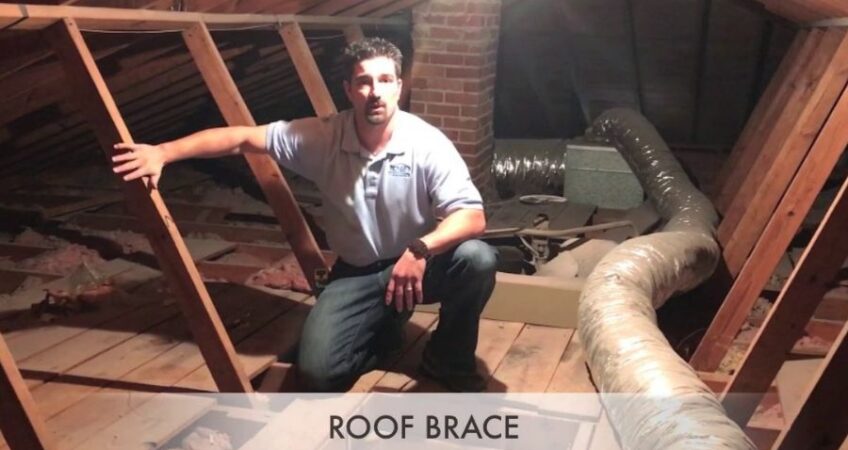Before embarking on any home improvement projects aimed at creating an airy, open-concept layout or expanding your living space, it’s crucial to discern whether the walls you’re planning to modify are merely decorative or perform a critical role in bearing loads. Refrain from dismantling any walls until you’re certain of their contribution to the structural stability of your home. Should you happen to identify a wall is load-bearing, it might be prudent to adjust your renovation strategy. Here’s the rationale behind this cautious approach.
What is a Load Bearing Wall?
A load-bearing wall is fundamental in distributing the weight of various structural elements in your house, encompassing the roof, ceiling, and flooring. Tasked with the duty of supporting upper stories and occasionally even the roof itself, these walls—often referred to as “bearing walls”—are strategically engineered to channel the home’s weight down to its foundation.
Haphazardly demolishing a load-bearing wall can have dire repercussions, jeopardizing the safety of your dwelling by undermining its structural fortitude. Verifying the non-load-bearing status of a wall prior to its removal is thus of paramount importance.
How to Determine a Load-Bearing Wall
Aspire to upgrade your home without compromising structural walls? Here’s a guide to navigate this challenge:
- Blueprint Consultation: For a definitive starting point, unearth the home’s original blueprints, which clearly mark load-bearing walls, often annotated as “S” for “structural.”
- Ceiling Inspection: Observe the ceiling for any prominent beams stretching across your residence. Walls situated directly underneath these beams are likely integral to bearing loads. Absence of a beam may suggest the wall is non-load-bearing, but cross-referencing with blueprints or seeking expert advice is preferable.
- Basement and Crawl Space Assessment: Investigate the presence of steel beams or floor joists in the foundation areas. Discovering a perpendicular alignment of a wall to these joists points towards a load-bearing function, while parallel walls typically do not bear loads.
- Foundation Examination: Walls that extend down to or originate from the foundation tend to be load-bearing. This is especially pertinent in houses with extensions, where what are now interior walls may have originally been external boundaries.
Crucial Insights on Load-Bearing Wall Removal
Removing a load-bearing wall is technically feasible. However, attempting this without a seasoned construction professional or engineer is ill-advised.
Absent meticulous preparation, the demolition of a load-bearing wall might precipitate a structural emergency, including sagging ceilings or, in extreme cases, a residential collapse.
When ascertaining whether a wall is load-bearing, additional elements must also be contemplated, namely:
- Necessity of Permits: Many local ordinances mandate obtaining a permit and securing a structural engineer’s authorization for wall modifications.
- Support Structure Replacement: Prior to wall removal, appropriate support must be incorporated to prevent long-term sagging of the home’s structure.
- Appropriate Beaming: Laminated veneer lumber (LVL) beams are commonly employed to sustain the house’s structure when a load-bearing wall is removed, underscoring the need for suitable reinforcement.
- Hazardous Removal: The complexity and potential danger associated with removing load-bearing walls necessitate stringent safety protocols and professional intervention to preempt disaster.
Alternate Solutions to Load-Bearing Wall Removal
The expenses and complexities associated with removing load-bearing walls can sometimes exceed the homeowner’s initial expectations. In such cases, considering alternatives like opening a passageway while keeping the structural wall intact offers the sought-after openness at a reduced cost and simpler execution without typically requiring special permits or engineering services.
FAQs: Load Bearing Walls
What potential downsides exist when removing a load-bearing wall?
Improper removal of a load-bearing wall can significantly damage your home’s structure. It’s critical to seek guidance from a professional who can accurately determine the wall’s status before proceeding with changes.
What benefits can arise from removing a load-bearing wall?
With expert assistance, eliminating a load-bearing wall can revolutionize your home’s aesthetics and practicality, potentially enhancing its value, especially if an open floor plan is achieved.
Is it mandatory to obtain a permit for load-bearing wall elimination?
Generally, yes. Since structural alterations are substantial, permits are usually required for legal and safe modifications of any load-bearing wall.
Should the removal of a load-bearing wall be entrusted to a professional?
Absolutely. Due to its complexity and risks, pursuing this task alone is not recommended. Enlisting professionals proficient in identifying and securely removing load-bearing walls can alleviate stress, reduce costs, and guarantee a safe project completion.

